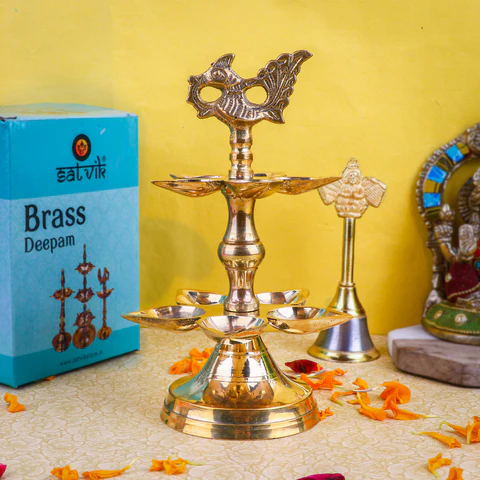

A Tulsi mala is a string of beads made from the
wood of the Tulsi (Holy Basil) plant, and it holds immense significance in
Hinduism. The Tulsi mala is commonly used for chanting mantras, prayers, and
for meditation. Here's a description of Tulsi mala:
1. Material:
Tulsi Wood: The beads are made from the wood of the Tulsi plant (Ocimum sanctum),
considered sacred in Hinduism. Tulsi is believed to have purifying and
spiritual qualities.
2. Appearance:
Small Beads: Tulsi malas typically consist of small
beads, each one carved or shaped from Tulsi wood. The beads are usually round
and have a natural greenish hue.
3. Number of Beads:
108 Beads: A traditional Tulsi mala consists of 108 beads, which are considered an
auspicious and sacred number in Hinduism. There may also be additional spacer
or "guru" beads.
4. Significance:
Sacred Plant: Tulsi is considered the embodiment of the goddess Lakshmi and is
revered for its spiritual and medicinal properties.
Purification: Wearing or using a Tulsi mala is believed to have purifying effects on
the mind, body, and spirit.
5. Spiritual Practices:
Chanting Mantras: Devotees use Tulsi malas for chanting mantras, especially those
dedicated to Lord Vishnu or Krishna. The most common mantra is the Hare
Krishna Maha Mantra.
Prayers and
Meditation: Tulsi malas are
used during prayer and meditation sessions to enhance focus and spiritual
connection.
6. Japa Counting:
Counting Repetitions: Each bead is used to count
repetitions of a mantra or prayer. Devotees move from one bead to the next as
they chant or pray, ensuring that they complete the desired number of
repetitions.
7. Energizing the Mala:
Blessings and Mantras: Before using the Tulsi mala
for the first time, it is often recommended to energize it with specific
mantras and prayers, invoking the divine energy of Lord Krishna or Vishnu.
8. Cultural Traditions:
Symbol of Devotion: Wearing a Tulsi mala is
considered a symbol of devotion and a way to express one's commitment to
spiritual practices.
Traditional Garb: In some traditions, wearing a
Tulsi mala is part of the traditional attire for devotees.
9. Care and Respect:
Sacred Object: A Tulsi mala is treated with great
respect and is considered a sacred object. It is often kept in a clean and
sacred space when not in use.
Note: Tulsi malas may
come in different styles and variations, and some malas may have additional
beads, pendants, or tassels for decorative or functional purposes. The
information provided here is a general description based on common practices,
and specific details may vary based on individual preferences and traditions.
| Specifications | Descriptions |
|---|---|

Lorem, ipsum dolor sit amet consectetur adipisicing elit. Exercitationem, facere nesciunt doloremque nobis debitis sint?